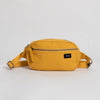Fashion keeps evolving. Today, fashion is dominating the world, allowing consumers to wear their beliefs and personality. Some use it to reflect their identity, and some express their views and culture.
Table of Contents
The love for fashion has led to increasing demand for newer styles of clothing, resulting in the acceleration of fast fashion. The market is poised for a 19% increase, reaching $163,468.5 million in 2025. And $211,909.7 million between 2025 to 2030. The replicated versions of high-end clothes that just hit the runway are getting out and about in the stores, sold for low prices. Brands and retailers like ZARA and Forever 21, who are also accused of mimicking designs, produce low-quality clothing items with cheap price tags. Unfortunately, the unseen picture is a horror show— poor comfort, quality, design, and fabrication, and the workplace environments in the clothing factories are inexplicable. In most cases, the garments are mass-produced in poorer countries where hiring unskilled labor is cheap.
Fast fashion comes today only to immediately go out of style tomorrow. We are trapped in a consumerism loop, where we buy cheap products to gratify the presumed 'wants' of the societal trends— yet never catching a breath to consider why we give in to the pull, or how much our overabundance of cheap clothing costs us and others down the road.
It's no revelation that fashion is one of the most highly polluting industries on the planet, accounting for about 10% of global greenhouse gas emissions. Unfortunately, an overnight transformation or spectacular accomplishments will be not easy– especially in the fast fashion market. Any transition that breaks away from the industry's growth figures is either rebuffed or delayed.
In a world where the hype of fast fashion constantly drugs consumers, the only viable solution to break free from intoxication is a gradual shift to sustainable fashion. A shift is highly required from raising awareness about sustainable fashion practices to actively participating in change. And the good news is that positive changes are occurring in the fashion landscape– with higher demands for sustainable clothing brands, more ethical brands are emerging.
Defining Ethical Fashion
To the fashion industry, ethics takes on a slightly different meaning. Ethical fashion means practicing ethical consumerism and incorporating eco-friendly approaches to reduce harm to people and the environment. It considers the rights of people who make the clothing, people who provide the materials, concern for the livestock involved, and the environmental impacts. To put it simply, ethical fashion is concerned with all things good for individuals and society.
Why is Ethical Fashion important?
Fashion and ethics are related in more ways than we realize. Glamor, accessories, and entertainment have blinded the world from seeing the darker side of fashion. Consumers enjoy the rapid trend changes and cheaper price tags, but there is more to what meets the eye. Some good things are neither cheap nor free, and fashion is one of them– someone, somewhere, pays for it. Behind the veil of satins and laces lies a population being exploited to meet the demands of fast fashion.
Let's take a look –
- Exploited workers: Factories that churn cheap clothes do not care about the conditions of their workers. Serious human rights violations happen in these working environments– forced overtime, hazardous working conditions, limited wages, gender discrimination, child labor, etc. Workers are not paid enough compared to their hard work.
- Raw material providers: Our clothes are made out of textiles and fabrics, and they are cultivated by farmers and workers who make a living out of them. Cotton, polyester, linen, etc., are in high demand— global cotton production has increased by 7.5 per cent from the previous season. The consumption is so high that research reveals it will surpass production in 2022/23, lowering global stocks by 2.5 million bales. These facts only mean higher involvement of underpaid laborers. The growing demand for cotton is forcing farmers to produce using hazardous shortcut alternatives– employing pesticides and insecticides, abusing water resources, etc.
- Animal exploitation: Many animals such as minks, crocodiles, rabbits, and even dogs are exploited for their furs. The fashion industry has long been using animal furs to produce luxury items. The movie, 101 Dalmatians (1996) portrays how people can become cruel to acquiring 'luxury fashion material' from animals.
- Environmental damage: Where do the bulk of outdated clothes go? They are thrown in the landfills, incinerated, or just left lying somewhere in the open trying to seep into nature. The problem is that fast fashion clothes are mostly made of non-biodegradable, synthetic materials and manufactured with chemicals. As a result, they release massive amounts of carbon emissions and ruin the surroundings during the dead playing period (which can go up to 100s of years).
Final Thoughts
Revisiting the causes that are at stake is all the more reason to embrace ethical fashion– wearing clothes from sustainable brands certified by the highest third-party standards, such as Fairtrade, and GOTS. Being conscientious of where your clothes come from while buying only what is necessary is a wonderful way to kickstart our ethical fashion journey. Plus, ethical fashion is super chic—- the breathtaking Harry Potter star and UN ambassador, Emma Watson, rocking ethical casuals and haute couture proves just that. Let us lead the change in the fashion industry with an ethical sense of style while inspiring others to do the same!
Speaking of chic ethical fashion– Our sustainable backpacks, mini backpack, 15 inch laptop case and all of our products meet the highest social and environmental standards.
- Not only they are made with organic cotton canvas, but they are also:
- Made using Fairtrade Cotton
- Manufactured at a Fair Trade Certified Factory
- And, are GOTS Certified
Related Blogs:
- What Are the Environmental Impacts of Fast Fashion?
- Why Does the Fashion Industry Need to be More Sustainable?
- 5 Reasons to Ditch Fast Fashion





